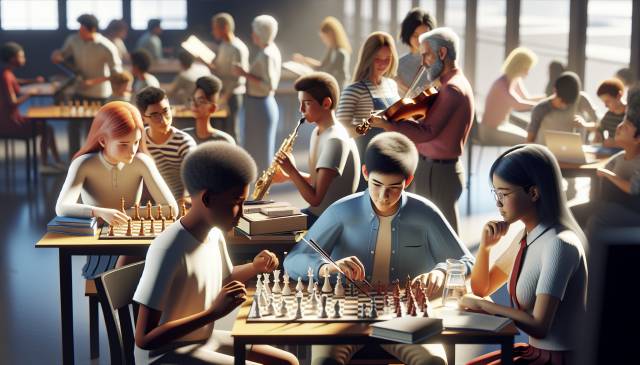
Education is often seen as a linear journey, where students follow a prescribed path of classes and exams. However, the reality is much richer and more complex. One of the key factors that enrich this journey is the involvement in extracurricular activities. These activities provide students with opportunities to explore interests, develop skills, and form social connections, all of which significantly enhance their educational experience.
The Role of Extracurricular Activities
Extracurricular activities encompass a broad spectrum of options, including sports, clubs, arts, and community service. Participation in these activities can lead to a range of benefits:
- Skill Development: Students often acquire valuable skills that may not be taught in the classroom, such as leadership, teamwork, and time management.
- Social Interaction: These activities provide a platform for students to meet peers with similar interests, fostering friendships and networks that can last a lifetime.
- Enhanced Academic Performance: Studies have shown that students who participate in extracurricular activities tend to achieve higher grades and have better attendance rates.
- Personal Growth: Engaging in diverse activities can help students discover their passions and develop a sense of identity, boosting their confidence.
Academic and Extracurricular Synergy
Many educators and researchers advocate for the integration of academic and extracurricular pursuits. The synergy between these two realms can lead to improved educational outcomes. For instance, students involved in debate clubs enhance their critical thinking and public speaking skills, which directly translate into better performance in subjects like English and Social Studies.
Examples of Successful Integration
Letâs take a look at how some schools and institutions have successfully integrated extracurricular activities into their educational framework:
- STEM Clubs: Schools that offer science and technology clubs can provide hands-on experiences that complement classroom learning, making subjects more engaging.
- Art and Music Programs: These programs encourage creativity and self-expression, which are crucial for cognitive development and have been linked to improved academic performance.
- Sports Teams: Participation in sports teaches discipline and resilience, skills that are essential for academic success.
Challenges and Considerations
While the benefits of extracurricular activities are numerous, it is important to recognize the potential challenges as well. Students can sometimes feel overwhelmed by the demands of both academic and extracurricular commitments. Thus, it is essential to find a balance that allows for both personal interests and academic responsibilities.
Here are a few strategies to help students manage their time effectively:
- Prioritize Activities: Students should choose a few activities that genuinely interest them rather than spreading themselves too thin.
- Set Realistic Goals: Establishing achievable goals for both academic and extracurricular pursuits can help maintain motivation and reduce stress.
- Communicate: Open communication with teachers, coaches, and family members can provide the support needed to balance various commitments.
How to Choose the Right Extracurricular Activities
Selecting the right extracurricular activities can be as important as the activities themselves. Here are some tips for students looking to get involved:
- Reflect on Interests: Consider what hobbies or subjects excite you. This can guide you toward activities that you'll enjoy.
- Try Different Things: Don't hesitate to experiment with a variety of activities before settling on the ones that fit you best.
- Seek Guidance: Talk to teachers, counselors, or peers about their experiences in different programs to gain insights.
Conclusion
Extracurricular activities are a vital component of a well-rounded education. They not only enhance academic performance but also contribute to personal and social development. By participating in these activities, students can unlock their full potential, preparing them for future challenges both in and out of the classroom. So, whether youâre interested in sports, arts, or community service, dive in and explore the myriad of opportunities that await!

